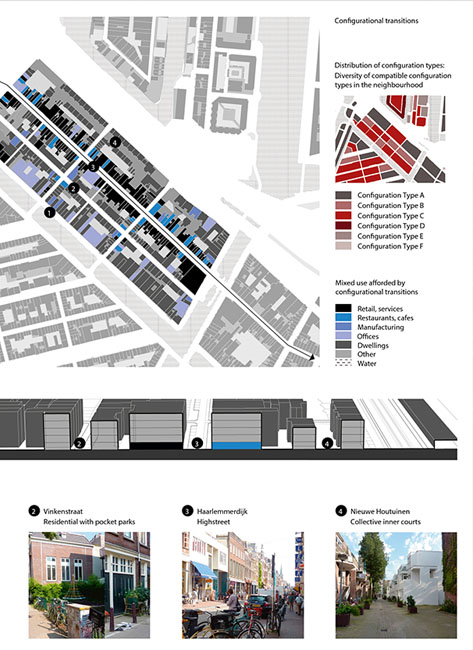Mixed-Use City
Configurations from Street Network to Building Plot
Abstract
Today the idea of ‘mixed use’ is one of the leading policies in the urban (re)development of many European cities. UN Habitat recently indicated that: ‘. . . cities have a natural advantage when it comes to promoting low-carbon mobility. Their density and mixed use ensure that many destinations can easily be reached on foot, by bike or using public transport.’ From this we can define mixed-use neighbourhoods as those that interweave a diversity of urban activities within a walkable distance, thus in spatial proximity. Which urban configurational conditions afford a mixed-use city?
It comes as no surprise that different activities require different spatial conditions. Retail, for example, needs centrally located and accessible streets that are pedestrian friendly, as well as a high built density, which points at a high flow of people that will deliver a critical mass. Smallscale manufacturing, on the other hand, benefits from accessible outdoor space, doors big enough to enable the transport of larger products as well as well-accessible loading zones. Then there are the hybrid businesses that in the last years have become more common, which integrate different types of work activities. You can think of workshops manufacturing products and selling them on the spot, or businesses selling books and being a café at the same time, or service businesses also selling products. Dwellings, which nowadays also often accommodate a home-office, usually need a quieter environment, with high accessibility to green and other leisure facilities. A mixed-use city thus should provide all these different conditions in proximity. All activities depend on the spatial condition of the place itself, but also on their position in the network of the urban street system. Therefore, a multiscalar and multivariable spatial understanding of the affordance of mixed use is crucial.



